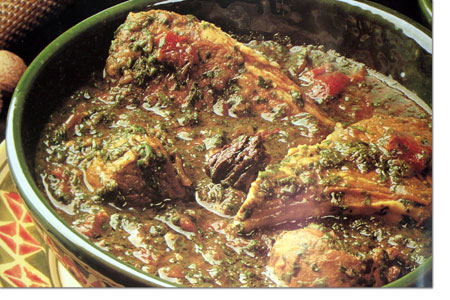| ||
A flurry of curry
by Chef Boy Ari I’m happy to say that my six weeks in Asia were a nonstop all-I-could-eat buffet. And whether I was feasting on cube-shaped noodles made from radish flour, leather marinated in chili pepper sauce, or a curry with a complex flavor revealed in stages, I never forgot you, dear reader. Always, I was scribbling furiously, blasting my way unannounced into kitchens (begging forgiveness being more effective than asking permission), and risking my “innard” peace by sampling yak and fish, the feet of chickens and pigs, unlaid duck eggs and unknown insects in their larval stages. The exotic stuff was cool, but I was more interested in searching for nuggets of information I could bring back for use at home, recipes that could be prepared with ingredients available on this side of the ocean. Sometimes particular ingredients can’t be imported, but the general theory behind a meal’s preparation can, and this theory can be applied to our more common raw materials. In addition to my journal full of food-splattered notes, I picked up some cookbooks along the way. One, 50 Great Curries of India by Bamellia Panjabi (Rupa & Co.) is particularly captivating. While the recipes are user-friendly, the detailed introduction does wonders to demystify the complexities of Indian cooking. Sections called “What Exactly is Curry?,” “Making Curry” and “The Curry Picture” may seem redundant, but each reveals a little more about this spicy staple of Indian food. Armed with this new information, I’ve been boldly going where I’d never gone before. And today, I’m going to take you with me, recounting one particular recipe with some of my own commentary. The recipe is called paalak gosht, which means “meat with spinach,” and comes from the north Indian state of Punjab. Since the cow is sacred in India, beef is rare. The most common red meat is mutton, which we know of as old sheep, but in India it means goat. Here in the Rockies, we have mutton, goat and even cow, but venison seems more culturally appropriate. Plus, I have a freezer-full, so that’s what I’m using. Paalak gosht preparation begins with pureeing garlic (two big cloves) with an equal part ginger, and two or three green chili peppers in a little water (to thin it out). Whisk a 1/2 cup of yogurt (to loosen it up), and add it to the puree with 1/4 teaspoon of cumin. Marinate a pound of meat, cut into chunks, in this spiced yogurt for at least an hour. There are several reasons why yogurt is sometimes used in curry. Its flavor acts as a “souring agent,” something most Indian curries contain. Other souring agents are vinegar, tamarind, lime, tomato and green mango. Yogurt is also a “thickening agent,” helping the curry achieve the right consistency (other thickening agents are onions, coconut, ground nuts and lentils). Flour, explains the cookbook’s author, isn’t used because it “has no flavor.” Speaking of which, if you were to taste this marinade you might find the flavor too strong. But when it’s combined with other strong flavors it will be just right. It’s also worth noting that cumin was added to the marinade, and later it will be added again. When you add spices makes a big difference in how they add their flavor. While the meat is marinating, blanch a 1/2 pound of spinach leaves for 10 seconds in boiling water, then puree and set aside. Now the action really begins. Heat 1/4 cup of oil and fry one cinnamon leaf (you can substitute two bay leaves), three cloves and two cardamom pods. Frying spices in oil gets the strongest flavor out of them. When the bay leaf begins to turn brown, add a 1/2 pound of chopped onions and fry for 15 minutes on medium heat. Then add coriander powder (best ground fresh from seeds) and sauté two minutes. Add 1/2 teaspoon cumin, and then a little water to thin it out and keep it from burning to the bottom. Cook like this for a few minutes, then add the meat and its yogurt marinade, along with three tomatoes, chopped. By now the flavor is starting to come together, but first, add 3/4 cup water, 1 teaspoon of salt, and cook slowly for at least 20 minutes (or as long as you want depending on how soft you want the meat). Finally, add the pureed spinach, transforming the color into an appetizing shade of green. The book recommends serving this curry with an Indian-style flatbread, like a chapatti, naan or paratha. But a thick flour tortilla – heated, of course – comes pretty close. As with the substitution of venison for goat, the flour tortilla brings the dish home to North America, where we happen to like the subtle, earthy flavor of wheat flour. •
|


